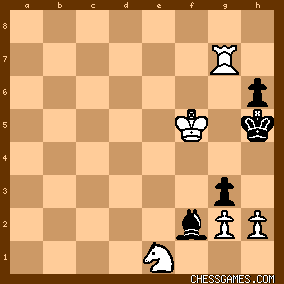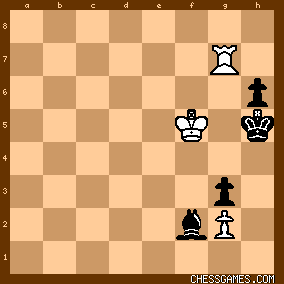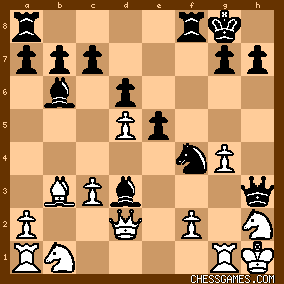| Phony Benoni: Perhaps you are unfamiliar with Samuel Loyd's famous story, <Charles XII at Bender>? It appeared in the "Chess Monthly" for March, 1859, p. 77-82. Briefly, the story goes that the Swedish King Charles XII, during the siege of Bender in 1713, whiled away the time playing chess. One day, while playing White against Grotheusen, one of his ministers, this position was reached: 
click for larger viewCharles happily announced mate in three, and told Grotheusen to work it out himself. Suddenly, a bullet from one of the besieging Turks shattered White's knight, leaving this position. 
click for larger viewGrotheusen was all for calling it a day at this point. Charles insisted he put White's other knight on the board and work out the mate, then stopped him and announced that White could now mate in four instead. So a another bullet flies through the air, and snips off White's h-pawn. 
click for larger viewCharles laughed, studied the position, and announced mate in 5! Grotheusen, for his part, deserted the next day, probably in search of an opponent he could beat. If you can access Google books, you owe it to ourself to read the entire account. Loyd was a marvelous writer. http://books.google.com/books?id=KT... But why post this here?
I was browsing through the new additions over at <jnpope>'s "Chess Archaeology" site tonight, and came across a little tidbit from the "Charleston Sunday News" of February 5, 1899: http://www.chessarch.com/excavation... There was a game, quoted from the "Bristol Mercury", purporting to be played between Grothusen and King Charles XII during the Siege of Bender. A poem by J. A. Miles, accompanied the score, essentially retelling Loyd's story. It turned out to be the game on this page (thank goodness; can you imagine changing the "Evans Gambit" to the "Grotheusen Gambit"?), with a couple of reasonable moves added to the end: <19.Kh1 Qxh3 20.Rg1>, producing this position: 
click for larger viewCharles announced mate in 4. A bullet knocks out that Black knight, and Charles announces mate in 4 again. Another bullet takes out the ♗b6, and now Charles announces mate in 5! Now if you're still with me, you're probably wondering if this game gave Loyd the idea for his story. In all probability, no. As you can see, the game was played at Paris in March, 1859, and the story appeared in that month's issue of the "Chess Monthly". The trans-Atlantic cable was not working at the time, so it doesn't seem possible the score could have reached New York quickly enough. No; it just looks like somebody noticed the feature of Morphy's game later, and Mr. Miles decided to have to fun with it. | 




